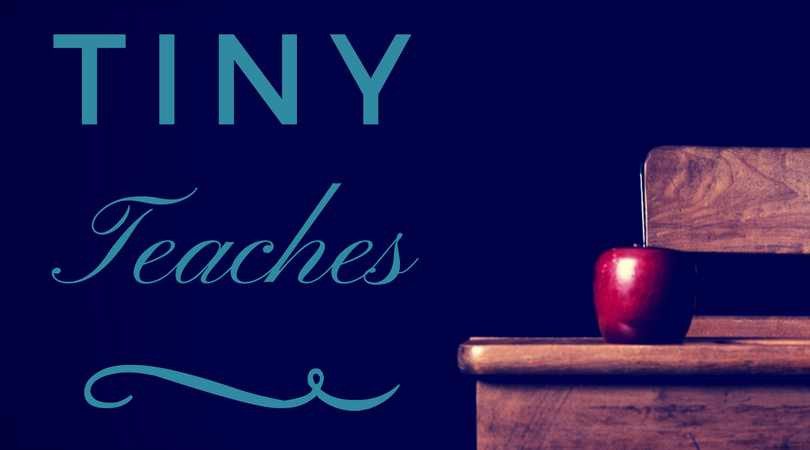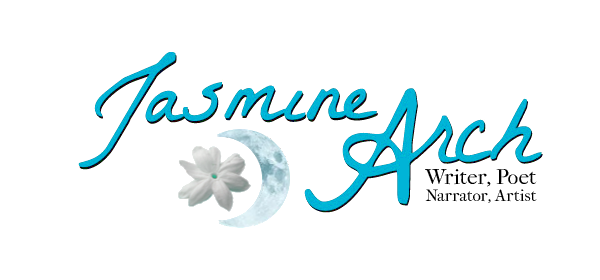That’s What She Said: The Use of Dialogue Tags
One of the biggest challenges in writing fiction, in my opinion, is the interaction of our characters. How do we portray them? They need to come alive for the reader. They need to be believable. Dialogue is a big part of that. We can use conversations between people to learn more about them, and about the world they live in.

So Let’s Talk.
Today, I’d like to talk to you about the use of dialogue tags,” Jasmine said quietly.
This is how I learned to format dialogue in school. I imagine many of you learned it that way. It’s not wrong. But does that make it right?
When you format your dialogue like this, it becomes a missed opportunity. Instead of simply clarifying that Tiny is the speaker, I could have told you so much more about Tiny. I could show you the body language that accompanies her speech. I could show you what she’s doing, or how she looked.
Jasmine stopped pacing back and forth in front of the blackboard. “Today, I’d like to talk to you about the use of dialogue tags.” She pushed up the glasses that had slipped down her nose, turned to the blackboard and picked up a piece of chalk.
The second example, sans dialogue tags, gives us more background information, without allowing the backstory to dominate the prose. It’s all about what Tiny does and says. But it tells us we’re in a classroom. It tells us Tiny wears glasses and they sometimes slide down her nose.
There is another difference between the two. The first example tells us something is said. Something that happens. It raises the question of who is telling us about these events. Who is the narrator?
The presence of a narrator reminds us of one thing: the fact that it’s just a story. We interact with the narrator instead of the characters. It places more distance between us and the action–the people we’re reading about.
So basically, when we resort to dialogue tags, we lose an opportunity to do so much more.
We lose the opportunity to provide a setting in which the dialogue occurs and characterisation of the speakers. And we lose an opportunity to put our readers right in the middle of the action.
But… But… Everyone Uses Dialogue Tags. I’ve Seen It In Books.
Well. Just because other people use them, do you feel you should too? I’ll refer you to the rule I provided in my previous article: Your ass better be famous already.
But… But… I Need My Dialogue Tags!
I bet you don’t. 99.5 percent of the dialogue tags I see are unnecessary. They’re often easier. I’ll admit that much. It’s going to be harder to think about who does what and who is standing where and to work that into your prose. But this offers the reader so much more. It’s worth every bit of effort. I promise.
Come On, Tiny. What if I Really, Really Need Dialogue Tags?
There are some occasions where you do need them. I’ll give you that much. I found one example of it in the Fantasy series posted by my friend John King recently, called Before The Dawn.
The protagonist in his story is a young blind girl. Especially when writing in Deep POV, you want your prose to reflect what your POV character thinks, sees and does. That’s what goes into the beats you’ll surround your dialogue lines with. But what do you do when your character doesn’t see anything for you to show?
This would be one of the places where the dreaded dialogue tag has a place.
“You know who. The cursed old bitch,” Granton chimed in. He must have come straight from work. The smell of sea and fish clung to him.
However. Even then, the absolute necessity of the dialogue tag in this instance is up for debate. We, pitiful humans, often rely heavily on our vision, but there are five senses for us to utilise. Our character can taste, hear, smell and feel things too, and these too, can give amazingly vivid descriptions.
“Shh! Don’t say ‘er name.” A wet finger squeaked on polished wood as Denny made the sign of the cross on the ale-spattered table. “Don’t ever say ‘er name. Gives ‘er more power, it does.”
I pulled this out of context just a bit, but the same author refrained from using a dialogue, and instead he added a beat to break up the character’s dialogue line, and he worked a beautiful and very vivid auditory detail into it that really made the scene come alive for me. It shows me who is speaking, and it even tells me that our friend Denny is rather superstitious.
As they passed the Captain’s Rest, the reek of stale beer and tobacco smoke wafted into their path. Her father paused and squeezed her hand, his thick calluses digging into her palm. “I fancy an ale. Would you like some apple juice?”
This time, we’re provided with tactile and olfactory impressions to bring us into the scene. No visuals. But equally powerful. And do we miss those dialogue tags?
We do not.
A dear friend of mine would probably suggest we burn them with fire to make sure they don’t come back.
Fine. I Get The Point. But I Really, Really Need Them!
In that case, you had better get it right.
Rule Number One: Less Is More
Use them only when you can’t avoid them. Using them in one strategic place in your story or chapter is not the same as dropping them everywhere you can.
Rule Number Two: KISS or Keep It Simple, Stupid
Try to avoid going on an endless quest for alternatives to “Jasmine said.” If I did my job right, you won’t be using enough dialogue tags to get bored with them anyway. Why? An endless parade of “Jasmine giggled,” “Jasmine chortled,” and “Jasmine intoned,” distracts the reader. Honestly? It’s annoying. Said, however, is almost invisible. Readers are so used to seeing “Jasmine said,” that they might skim past it without noticing too much.
You might get away with some variations. After all. Jasmine doesn’t just say things. Sometimes she asks a question. Sometimes she whispers. If her husband gets on her nerve she might yell. Knowing her, this won’t happen too often, but she may even agree with someone from time to time.
These variations, however, are to be used with even more caution than the dialogue tag itself. Like nutmeg, they work best in small doses.
Rule Number Three: Punctuation Matters. Period.
If you’ve read the other posts in this series, you’ll probably recognise this title. I know. But it’s still true, goddamnit!
If you’re going to use those pesky dialogue tags, at least use them correctly.
When you’re using descriptive sentences or action from a character to attribute the dialogue line, you use a period.
Jasmine looked at her pupils over the rim of her glasses. “I forgot what I was supposed to talk about. Oh right! Dialogue tags.”
When your tag comes before the spoken sentence, it should be followed by a comma.
Neg said, “I don’t understand these ridiculous rules.
When your dialogue tag comes after the spoken sentence, you punctuate that with a comma or another punctuation mark, within the quotes, and then you continue the sentence.
“Let’s have some more examples,” she said.
When your dialogue tag comes in the middle of the spoken sentence, you have the option of breaking with a period and beginning a new sentence.
“Wait!” another student shouted. “Are you sure we need more examples?”
Or you can use em dashes to allow the sentence to continue.
“Well”—said Jasmine—”of course I’m sure. There’s still some room left on the blackboard.”
While it’s a grammatically correct option, I’d advise you to use the em dash with caution. If you want the sentence to continue, you had better have a very good reason to interrupt it in the first place. The only reason I can think of, is when your character begins some sort of action in the middle of a spoken sentence, and it’s absolutely vital to the story that the reader realises this. But let’s be honest here. How often is that likely to happen? Probably about as likely as needing the dialogue tags in the first place. Right?
And remember: When you punctuate your dialogue line with exclamation marks or question marks, and place a dialogue tag behind it, the tag is still part of the sentence and it should begin with a lowercase letter.
“Well, that’s all for today!” she said as she wiped the blackboard.
Stay tuned for the next lesson!
Hugs
Jasmine

3 Responses
I rubbed the itch out of my eyes and took a deep breath. “I needed this one.” I thought back on all the writing and editing I’d done recently and cringed. “At least now I can fix it.”
This speaks to my soul. I am often annoyed by giggling, exclaiming, and otherwise oversimplified characters in cheap fiction. I think I am VERY excited to have found your blog!
Hi, and welcome! If there is a subject you’d like to have me tackle, I’m always open to suggestions!